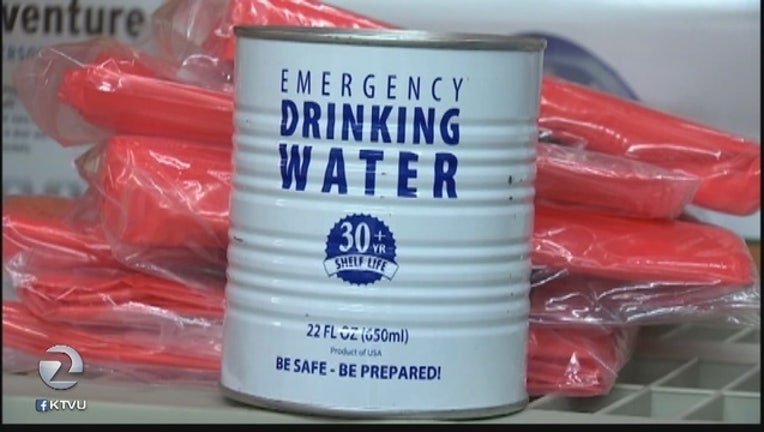Tips on preparing an earthquake kit

Even though we live in "earthquake country" many families don't have earthquake kits at the ready.
It's easy to create a kit with a short trip to a grocery and hardware store.
Food products here have extremely long shelf lives, including water with 30 to 50 year life spans. Things that have to be replaced on a regular basis are plainly marked as such and there are replenishment kits to update the kit. Rescue tools, first-aid kits and sanitary sewage supplies are essential. Money, $100 in small bills and change should be in there since banks, ATMs and credit card machines may not be functioning
Kits should not be stuffed in closets or basements that might become inaccessible. "The earthquake kit belongs in your vehicle. You want to have supplies with you at all times; whether you're just down in town for the day or over a bridge," says Michael Skylar, founder of the Disaster Supply Center. The kit should be in a backpack or duffel bag you can carry, never to be raided for goodies or supplies until needed.
"As soon as an event occurs, a crisis occurs; people go out to the stores and clean out the shelves. So, you're not gonna find food and water and the things that you want," says Skylar.
The Internet is full of earthquake kit options that can be ordered on sites like Amazon. Otherwise, it just takes a trip to the hardware and grocery stores.
USGS recommends covering the following categories in your earthquake kit:
- Good and water
- Cooking supplies
- Clothes
- Medicine
- Power and communications
- Various items
Read a full list of items to pack in your survival bag here.
After you get all your supplies together, don't forget the most important things: personal things such as prescriptions, like glasses in a case so they don't get crushed, food for you pets. All of these things are necessary if you're going to be truly prepared for an earthquake.

